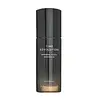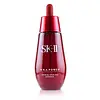What's inside
What's inside
 Key Ingredients
Key Ingredients

 Benefits
Benefits

 Concerns
Concerns

 Ingredients Side-by-side
Ingredients Side-by-side

Water
Skin ConditioningGlycerin
HumectantPropanediol
SolventCaprylic/Capric Triglyceride
MaskingGlycereth-26
HumectantAlcohol Denat.
Antimicrobial1,2-Hexanediol
Skin ConditioningNiacinamide
SmoothingChondrus Crispus Extract
Skin ConditioningXylitylglucoside
HumectantChlorella Vulgaris Extract
Skin ConditioningSaccharum Officinarum Extract
MoisturisingXylitol
HumectantSaccharomyces Ferment Filtrate
HumectantGanoderma Lucidum Extract
Skin ProtectingInonotus Obliquus Extract
Skin ConditioningTuber Melanosporum Extract
HumectantButylene Glycol
HumectantPolyacrylamide
Hydrogenated Lecithin
EmulsifyingGlyceryl Stearate
EmollientPEG-100 Stearate
Ammonium Acryloyldimethyltaurate/Vp Copolymer
Dimethicone Crosspolymer
Emulsion StabilisingGlucose
HumectantC13-14 Isoparaffin
EmollientAnhydroxylitol
HumectantVinyldimethicone
Fructooligosaccharides
HumectantFructose
HumectantIsododecane
EmollientLaureth-7
EmulsifyingEthylhexylglycerin
Skin ConditioningAdenosine
Skin ConditioningPalmitic Acid
EmollientSodium Phytate
Stearic Acid
CleansingTocopherol
AntioxidantDipropylene Glycol
HumectantPentylene Glycol
Skin ConditioningCaprylyl/Capryl Glucoside
CleansingCeramide NP
Skin ConditioningCetearyl Alcohol
EmollientXanthan Gum
EmulsifyingParfum
MaskingWater, Glycerin, Propanediol, Caprylic/Capric Triglyceride, Glycereth-26, Alcohol Denat., 1,2-Hexanediol, Niacinamide, Chondrus Crispus Extract, Xylitylglucoside, Chlorella Vulgaris Extract, Saccharum Officinarum Extract, Xylitol, Saccharomyces Ferment Filtrate, Ganoderma Lucidum Extract, Inonotus Obliquus Extract, Tuber Melanosporum Extract, Butylene Glycol, Polyacrylamide, Hydrogenated Lecithin, Glyceryl Stearate, PEG-100 Stearate, Ammonium Acryloyldimethyltaurate/Vp Copolymer, Dimethicone Crosspolymer, Glucose, C13-14 Isoparaffin, Anhydroxylitol, Vinyldimethicone, Fructooligosaccharides, Fructose, Isododecane, Laureth-7, Ethylhexylglycerin, Adenosine, Palmitic Acid, Sodium Phytate, Stearic Acid, Tocopherol, Dipropylene Glycol, Pentylene Glycol, Caprylyl/Capryl Glucoside, Ceramide NP, Cetearyl Alcohol, Xanthan Gum, Parfum
Water
Skin ConditioningButylene Glycol
HumectantGlycerin
HumectantGalactomyces Ferment Filtrate
HumectantNiacinamide
SmoothingPentylene Glycol
Skin ConditioningPhytosteryl/Octyldodecyl Lauroyl Glutamate
Skin ConditioningIsopropyl Isostearate
EmollientDimethicone
EmollientSqualane
EmollientXylitol
HumectantVinyl Dimethicone/Methicone Silsesquioxane Crosspolymer
Boron Nitride
AbsorbentPanthenol
Skin ConditioningPEG-20 Sorbitan Cocoate
EmulsifyingTocopheryl Acetate
AntioxidantDimethicone/Vinyl Dimethicone Crosspolymer
Skin ConditioningPhenoxyethanol
PreservativeBenzyl Alcohol
PerfumingAcrylates/C10-30 Alkyl Acrylate Crosspolymer
Emulsion StabilisingDipentaerythrityl Tri-Polyhydroxystearate
EmollientPEG-11 Methyl Ether Dimethicone
EmulsifyingAminomethyl Propanol
BufferingCeratonia Siliqua Fruit Extract
MaskingLaureth-7
EmulsifyingMethylparaben
PreservativePolymethylsilsesquioxane
Sodium PEG-7 Olive Oil Carboxylate
EmulsifyingXanthan Gum
EmulsifyingDisodium EDTA
PEG-100 Stearate
PEG-7 Glyceryl Cocoate
EmulsifyingAcanthopanax Senticosus Root Extract
Skin ConditioningParfum
MaskingEthylhexylglycerin
Skin ConditioningHydrolyzed Soy Protein
HumectantCynara Scolymus Leaf Extract
Skin ConditioningPolyquaternium-7
Hydrolyzed Yeast Protein
Skin ConditioningPalmitoyl Pentapeptide-4
Skin ConditioningMethylsilanol Tri-PEG-8 Glyceryl Cocoate
EmulsifyingMethicone
EmollientCI 77891
Cosmetic ColorantCI 77492
Cosmetic ColorantWater, Butylene Glycol, Glycerin, Galactomyces Ferment Filtrate, Niacinamide, Pentylene Glycol, Phytosteryl/Octyldodecyl Lauroyl Glutamate, Isopropyl Isostearate, Dimethicone, Squalane, Xylitol, Vinyl Dimethicone/Methicone Silsesquioxane Crosspolymer, Boron Nitride, Panthenol, PEG-20 Sorbitan Cocoate, Tocopheryl Acetate, Dimethicone/Vinyl Dimethicone Crosspolymer, Phenoxyethanol, Benzyl Alcohol, Acrylates/C10-30 Alkyl Acrylate Crosspolymer, Dipentaerythrityl Tri-Polyhydroxystearate, PEG-11 Methyl Ether Dimethicone, Aminomethyl Propanol, Ceratonia Siliqua Fruit Extract, Laureth-7, Methylparaben, Polymethylsilsesquioxane, Sodium PEG-7 Olive Oil Carboxylate, Xanthan Gum, Disodium EDTA, PEG-100 Stearate, PEG-7 Glyceryl Cocoate, Acanthopanax Senticosus Root Extract, Parfum, Ethylhexylglycerin, Hydrolyzed Soy Protein, Cynara Scolymus Leaf Extract, Polyquaternium-7, Hydrolyzed Yeast Protein, Palmitoyl Pentapeptide-4, Methylsilanol Tri-PEG-8 Glyceryl Cocoate, Methicone, CI 77891, CI 77492
Ingredients Explained
These ingredients are found in both products.
Ingredients higher up in an ingredient list are typically present in a larger amount.
Butylene Glycol (or BG) is used within cosmetic products for a few different reasons:
Overall, Butylene Glycol is a safe and well-rounded ingredient that works well with other ingredients.
Though this ingredient works well with most skin types, some people with sensitive skin may experience a reaction such as allergic rashes, closed comedones, or itchiness.
Learn more about Butylene GlycolEthylhexylglycerin (we can't pronounce this either) is commonly used as a preservative and skin softener. It is derived from glyceryl.
You might see Ethylhexylglycerin often paired with other preservatives such as phenoxyethanol. Ethylhexylglycerin has been found to increase the effectiveness of these other preservatives.
Glycerin is already naturally found in your skin. It helps moisturize and protect your skin.
A study from 2016 found glycerin to be more effective as a humectant than AHAs and hyaluronic acid.
As a humectant, it helps the skin stay hydrated by pulling moisture to your skin. The low molecular weight of glycerin allows it to pull moisture into the deeper layers of your skin.
Hydrated skin improves your skin barrier; Your skin barrier helps protect against irritants and bacteria.
Glycerin has also been found to have antimicrobial and antiviral properties. Due to these properties, glycerin is often used in wound and burn treatments.
In cosmetics, glycerin is usually derived from plants such as soybean or palm. However, it can also be sourced from animals, such as tallow or animal fat.
This ingredient is organic, colorless, odorless, and non-toxic.
Glycerin is the name for this ingredient in American English. British English uses Glycerol/Glycerine.
Learn more about GlycerinLaureth-7 is created by the ethoxylation of lauryl alcohol using ethylene oxide. Lauryl alcohol is a fatty alcohol with hydrating properties.
This ingredient is an emulsifier and cleansing ingredient. As an emulsifier, it is used to prevent ingredients from separating. It also helps cleanse the skin by gathering dirt, oil, and pollutants to be rinsed away.
Niacinamide is a multitasking form of vitamin B3 that strengthens the skin barrier, reduces pores and dark spots, regulates oil, and improves signs of aging.
And the best part? It's gentle and well-tolerated by most skin types, including sensitive and reactive skin.
You might have heard of "niacin flush", or the reddening of skin that causes itchiness. Niacinamide has not been found to cause this.
In very rare cases, some individuals may not be able to tolerate niacinamide at all or experience an allergic reaction to it.
If you are experiencing flaking, irritation, and dryness with this ingredient, be sure to double check all your products as this ingredient can be found in all categories of skincare.
When incorporating niacinamide into your routine, look out for concentration amounts. Typically, 5% niacinamide provides benefits such as fading dark spots. However, if you have sensitive skin, it is better to begin with a smaller concentration.
When you apply niacinamide to your skin, your body converts it into nicotinamide adenine dinucleotide (NAD). NAD is an essential coenzyme that is already found in your cells as "fuel" and powers countless biological processes.
In your skin, NAD helps repair cell damage, produce new healthy cells, support collagen production, strengthen the skin barrier, and fight environmental stressors (like UV and pollution).
Our natural NAD levels start to decline with age, leading to slower skin repair, visible aging, and a weaker skin barrier. By providing your skin niacinamide, you're recharging your skin's NAD levels. This leads to stronger, healthier, and younger looking skin.
Another name for vitamin B3 is nicotinamide. This vitamin is water-soluble and our bodies don't store it. We obtain Vitamin B3 from either food or skincare. Meat, fish, wheat, yeast, and leafy greens contain vitamin B3.
The type of niacinamide used in skincare is synthetically created.
Learn more about NiacinamideParfum is a catch-all term for an ingredient or more that is used to give a scent to products.
Also called "fragrance", this ingredient can be a blend of hundreds of chemicals or plant oils. This means every product with "fragrance" or "parfum" in the ingredients list is a different mixture.
For instance, Habanolide is a proprietary trade name for a specific aroma chemical. When used as a fragrance ingredient in cosmetics, most aroma chemicals fall under the broad labeling category of “FRAGRANCE” or “PARFUM” according to EU and US regulations.
The term 'parfum' or 'fragrance' is not regulated in many countries. In many cases, it is up to the brand to define this term.
For instance, many brands choose to label themselves as "fragrance-free" because they are not using synthetic fragrances. However, their products may still contain ingredients such as essential oils that are considered a fragrance by INCI standards.
One example is Calendula flower extract. Calendula is an essential oil that still imparts a scent or 'fragrance'.
Depending on the blend, the ingredients in the mixture can cause allergies and sensitivities on the skin. Some ingredients that are known EU allergens include linalool and citronellol.
Parfum can also be used to mask or cover an unpleasant scent.
The bottom line is: not all fragrances/parfum/ingredients are created equally. If you are worried about fragrances, we recommend taking a closer look at an ingredient. And of course, we always recommend speaking with a professional.
Learn more about ParfumPeg-100 Stearate is an emollient and emulsifier. As an emollient, it helps keep skin soft by trapping moisture in. On the other hand, emulsifiers help prevent oil and water from separating in a product.
PEGS are a hydrophilic polyether compound . There are 100 ethylene oxide monomers in Peg-100 Stearate. Peg-100 Stearate is polyethylene glycol ester of stearic acid.
Pentylene glycol is typically used within a product to thicken it. It also adds a smooth, soft, and moisturizing feel to the product. It is naturally found in plants such as sugar beets.
The hydrophilic trait of Pentylene Glycol makes it a humectant. As a humectant, Pentylene Glycol helps draw moisture from the air to your skin. This can help keep your skin hydrated.
This property also makes Pentylene Glycol a great texture enhancer. It can also help thicken or stabilize a product.
Pentylene Glycol also acts as a mild preservative and helps to keep a product microbe-free.
Some people may experience mild eye and skin irritation from Pentylene Glycol. We always recommend speaking with a professional about using this ingredient in your routine.
Pentylene Glycol has a low molecular weight and is part of the 1,2-glycol family.
Learn more about Pentylene GlycolWater. It's the most common cosmetic ingredient of all. You'll usually see it at the top of ingredient lists, meaning that it makes up the largest part of the product.
So why is it so popular? Water most often acts as a solvent - this means that it helps dissolve other ingredients into the formulation.
You'll also recognize water as that liquid we all need to stay alive. If you see this, drink a glass of water. Stay hydrated!
Learn more about WaterXanthan gum is used as a stabilizer and thickener within cosmetic products. It helps give products a sticky, thick feeling - preventing them from being too runny.
On the technical side of things, xanthan gum is a polysaccharide - a combination consisting of multiple sugar molecules bonded together.
Xanthan gum is a pretty common and great ingredient. It is a natural, non-toxic, non-irritating ingredient that is also commonly used in food products.
Learn more about Xanthan GumXylitol is a humectant and prebiotic. It can help with dry skin.
In studies, xylitol has been shown to improve dry skin. It decreased transepidermal water loss, or when water passes through the skin and evaporates. Xylitol also showed to help improve the biomechanical properties of the skin barrier.
The prebiotic property of xylitol may also help reinforce our skin's natural microbiome. Having a healthy microbiome prevents infection by bad bacteria and helps with hydration.
As a humectant, Xylitol helps draw moisture from both the air and from deeper skin layers. This helps keep skin hydrated.
Xylitol is a sugar alcohol and commonly used as a sugar substitute. It is naturally occurring in plants such as strawberries and pumpkin.
Learn more about Xylitol